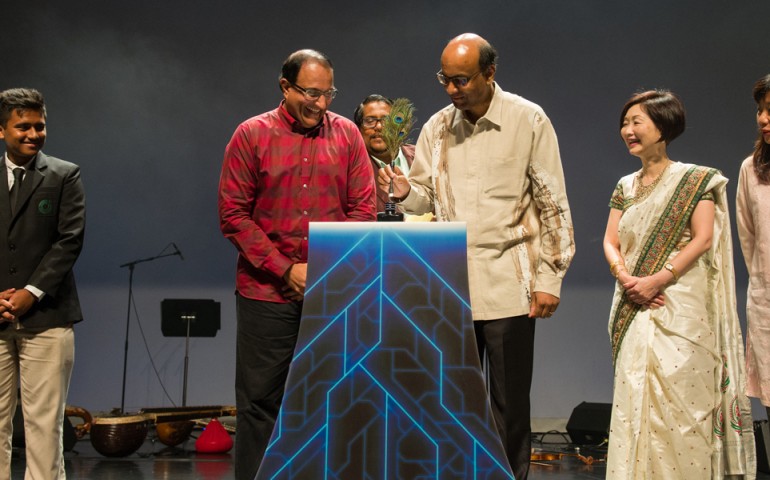[w8_row margin_bottom=”30px”]
[w8_column type=”col-md-6″]« Two ‘IQ’s to think about[/w8_column][w8_column type=”col-md-6″][/w8_column]
[/w8_row]
Launching of Tamil Digital Heritage Project – September 15th, 2015
This year being the 50th year of independence for Singapore, SG 50 celebrations are on throughout the island.
In Singapore, though the Tamils are just 5% of the population, it has its own literary contributions. Over the last fifty years, the Singapore Tamil Community has published a number of book to its literary credit. For any language or culture to grow, the community must keep making the necessary and relevant efforts.
The Tamil Digital Heritage Project(TDHP) is one such project initiated to safeguard the Singapore Tamil Literature in a digitalised form.
The Tamil Digital Heritage project was seeded more than two years ago by a very small group of citizens who wanted to commemorate the 50th anniversary of Singapore’s Independence in a
meaningful way.
In a function held on the 22nd August, 2015 at the National Library board, Mr S Iswaran, Minster, Trade and Industry and the patron of the project handed over it to the Deputy Prime Minister Mr S.Tharman Shanmugaratnam, as a gift to the Nation from the Tamil Community.
Mr Arun Mahizhnan, the lead of the program says, ‘ most of the books have little or no market and their public life is often confined to the day of the launch. The lack of a market and, even worse, the paucity of their use in the education system have relegated most of our literary publications to the dusty shelves of authors themselves and, in some cases, to the dustbin of history, to be forgotten forever. The only place where we can find most of our Tamil literary publications is the National Library, thanks to its collection policy’.
He also said that, ‘Instead of bemoaning the loss of life, some of us decided to give those books a new lease of life – in the digital form. We explored the possibility of digitizing the books so that they can be made available for anyone, anytime and even anywhere in the world, and for free.
We approached the Tamil authors whose creative sweat and toil produced those books and most of them gave their permission to digitisation readily, willingly and happily – and for nothing in return. If not for those authors, and the organizational support of the Association of Singapore Tamil Writers, this project would not even have begun’.
He attributes to the great support provided by National Library Board, the National Heritage Board, the National Arts Council and the National Book Development Council of Singapore, Tamil Teachers and the 250 volunteers.
Mr Tharman Shanmugarathnam, in his speech said ‘Many of the great Tamil classics are now being read easily and widely because more than a hundred years ago, Dr U V Swaminatha
Aiyer had the vision and the perseverance to collect decaying and disappearing palm leaf suvadis, and convert them into printed books. That was a new technology at the time. But this was not about technology, as much a labour of love – a love and reverence for culture and the Tamil language. Dr Swaminatha Aiyer, known more affectionately as Tamil Thatha, travelled all across Tamil Nadu visiting villages, and committed over five decades of his life to this mission. The project that we inaugurate today, though on a much smaller scale, is similar in spirit. It is a labour of love, not a mere technological innovation. Hundreds of volunteers dedicated themselves to the project, some for several months and over several hours a week’.
He also said that, ‘The digital collection has given our Tamil literature books of the last 50 years not only a new lease of life but a long lease of life. Even books will decay and, without care, will disappear. The 350-odd digital books in the collection itself hold the memories of about 80 authors over a 50 year period. They include Cultural Medallion winners K TM Iqbal (poet) and M Ilankannan (novelist).
I hope therefore that the digitisation project continues. The Indian community’s literary output – in Tamil and other Indian languages – has been on the rise. We must ensure we preserve the literary works of today’s generation for future generations. I hope too that these books will not only be treasured by the Tami lreading public, but that some of them will be translated into our other languages so that our whole nation can benefit from the memories of a small community’.








No Comment